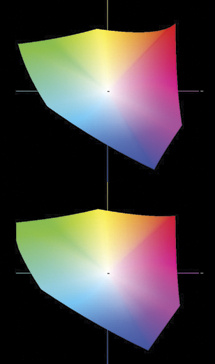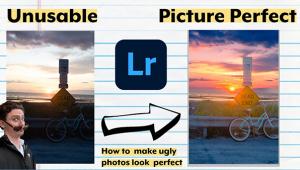Digital Help
Q&A For Digital Photography
Digital Help is designed to aid you in getting the most from your digital photography, printing, scanning, and image creation. Each month, David Brooks provides solutions to problems you might encounter with matters such as color calibration and management, digital printer and scanner settings, and working with digital photographic images with many different kinds of cameras and software. All questions sent to him will be answered with the most appropriate information he can access and provide. However, not all questions and answers will appear in this department. Readers can send questions to David Brooks addressed to Shutterbug magazine, through the Shutterbug website (www.shutterbug.com), directly via e-mail to: editorial@shutterbug.com or goofotografx@gmail.com or by US Mail to: David Brooks, PO Box 2830, Lompoc, CA 93438.
To aid us in making Digital Help as helpful as possible, please be specific in your query and include components, including software, that you use. David says, “Make me guess the problem and I might guess wrong.”—Editor
A New Wide Color LCD Display And Older Display Sensors—Bad Marriage
In a recent Digital Help column (April 2010 issue) a reader asked about using a Spyder2 colorimeter with the NEC
P221-BK monitor instead of purchasing the P221-BK-SV product, which includes a colorimeter. The response the reader received was borderline insulting, not to mention incorrect in its statements. A little research goes a long way and when tasked with answering readers’ questions some should be done as they are looking to YOU for guidance. Although the Spyder2 is not a good choice for this application, a Spyder3 will work perfectly fine. You can purchase the SpectraView software directly from NEC for around $100. If (like me) you are in the market to purchase two replacement monitors and already have a colorimeter, some money can be saved by simply purchasing the SpectraView software separately and two of the P221-BK panels.
I’m very happy with my decision to purchase the NEC panels and use the Spyder3 colorimeter along with a purchased license of the SpectraView software. And yes, I did do my research. I communicated with NEC for a few days to confirm the Spyder3 could handle the full Adobe RGB color space and calibrate properly on the NEC panels.
For the record, your initial article on the P221-BK-SV panels is what triggered my switch in the first place.
Matthew M. Moog
via e-mail
My basis for the reply was a very long technical discussion with the programmer who developed the SpectraView II system, as well as previous conversations with the manager of the X-Rite technical department that manufactures the colorimeter for NEC. Neither the Spyder2 nor the early Spyder3 colorimeters will function entirely or accurately with the SpectraView II software, as the software does not support any other colorimeter in the same way or extent. There are two technical reasons. The first is that earlier colorimeters are filtered to respond to LCDs with much smaller color gamuts, which will cause a reading error. And second, the SpectraView II actually adjusts the setting of the display using a logarithm specifically designed to interact with the wideband NEC colorimeter. Any other colorimeter will not interface with the software to digitally adjust the display settings corresponding to the SpectraView requirements and settings and the readings that can be expected from the NEC colorimeter. You might not think this makes a difference, but it does. I have tried it and the differences are easily measured (see note and illustration). It is the software connection between the SpectraView II software via the proprietary NEC LCD display DDC connection that is crucial to obtaining critical display adjustment and performance from the NEC LCD displays.
Note: There is a good and justifiable reason for companies like NEC to be proprietary. How their system functions critically and accurately is dependent on a matched association of readings from a sensor the software can recognize and respond to critically, even though they specify many different brand/model colorimeters will work with SpectraView II.
And I got a good picture of this very recently. I received a new, current version of the Datacolor Spyder3Elite hardware, replacing a Spyder3 colorimeter I got not that long ago. So I used this new colorimeter to measure, calibrate, and profile my new wide color gamut EIZO FlexScan display. (See illustration. The difference in results was very dramatic, with the old sensor above and the new one below.)
The bottom line: all display sensors more than a year or two old were made for use with displays that reproduce much less color, and will probably provide an inaccurate result in adjustment, calibration, and profiling, adversely affecting the performance of a new wide color gamut LCD display like the NEC MultiSync P221W, EIZO FlexScan S2243W, and similar LCDs that reproduce over 95 percent of Adobe RGB color.
 |
Correction, And A Suggestion
In the May 2010 issue of Shutterbug you recommend the Mac mini with “8GB RAM.” As far as I can tell, the maximum RAM is 4GB. I am waiting for Apple to release a mini that can take 8GB of memory before I buy one. I have an aging MacBook Pro that can only use 2GB of RAM and Aperture runs slowly and gets “stuck.” I am hoping that with an 8GB-memory Mac mini Aperture will “fly.”
Second, you mentioned in the past that you use two Mac minis. I was hoping you would explain how you use these computers. One can buy three or four minis for the price of a MacBook Pro and since I have a really good monitor, I seldom use the laptop’s screen.
Louis Kravitz
via e-mail
Sorry, I made a mistake regarding the RAM in my Mac minis, which now number three, plus a Mac Pro. My Mac Pro has 8GB of RAM, two of the Mac minis have 4GB each, plus a new cheap one I just got that replaces my TV cable box and is now used to run movies and news off of the Internet on a large LCD TV screen.
Personally, I don’t use either Aperture or Lightroom, but I do use Adobe’s Photoshop CS4 and Elements as well as all versions of LaserSoft’s SilverFast, and in addition many Windows photo applications. My Raw scan files are a little over 200MB and I have no trouble with the minis processing them efficiently and rapidly. I use my Mac Pro to run InDesign and Acrobat 9 to do production jobs. All of my computers are in different places in my house and on an AirPort Extreme network that allows easy transfer between business, photo processing, and production work, because I can access all the computers from any one of the others via the AirPort network. Your aging MacBook Pro is probably the cause of any slowness, not due so much to 2GB of RAM but more by limited internal bandwidth.
Is Microtek Back In The US?
Q. According to the microtekusa.com website, Microtek has reopened sales and support for a few products, including the M1. I do a little bit of 4x5 so I do want that quality capability. I also like to print 16x20 or even larger. I could not find your review on the Epson V600. Is it coming out soon? And are you saying that it is just as good as the V700/750?
Daniel
via e-mail
A. I sent an e-mail to the address on the www.microtekusa.com site and got an immediate response from their Customer Service department. The site included their website store, plus Microtek is also available through Amazon.com. To get an independent confirmation I spoke with the US manager of a company in this field, and he assured me that the US Microtek sales website is an official part of Microtek’s worldwide operations.
In the past I tested and reviewed the Microtek ArtixScan M1 Pro for Shutterbug and was impressed with the mechanics, but the resolution and scan quality was not quite what one should expect today. For medium format 120 film and 35mm, the Epson Perfection V600 performed better for me than the Epson Perfection V750-M Pro.
Upgrade To The New Adobe Photoshop CS5?
Q. I have just been reading about CS5. What are your thoughts? Is it worth the upgrade? I realize that if wanted to upgrade, I’d need a new computer (I have a Mac G5, which I am very happy with).
If I were to upgrade, what would you suggest in terms of a new Mac? This is so annoying as just when you think everything is settled, there is something new.
Judy Grose
via e-mail
A. Regarding Adobe’s Photoshop CS5, to me there is little in it that is an advantage to photographic enthusiasts, although there is a lot for graphic designers and others doing graphics production work for all the new digital media like iPhones and the iPad tablet computer. But I would not give any encouragement to photo enthusiast readers to spend $199 for an upgrade that probably has little direct advantage to them.
As to the Apple Mac G5, it should continue to provide good service for a while yet. But eventually with a PowerPC processor model, you will need to move to one that has the current Intel processors. Personally, I find the top model of the little Mac mini does all I need these days.
What Is Color Accuracy?
Q. I have been browsing through your blog for articles on digital camera image quality, and I would like to have more information on color accuracy. Is there any data that can be used as a reference as to what is best?
Carolyn
via e-mail
A. The International Color Consortium has established a color standard for photography, and it is referred to as the ICC. The color standard is reproduced for test purposes as the IT8 Reference, and is used extensively in color management.
As to digital camera image quality “accuracy,” that is a problem to measure for two reasons. The first is that what a camera senses is but a small part of natural reality, a very short range of values. Then, when reproduced as a print or as an image on screen with a computer, the size of that range of values is further reduced. If the values were reproduced lineally true to the subject, then the resulting image would look flat and low in color intensity, and even more so when reproduced as a print or on screen.
Photography has evolved, but not so much on the basis of replicating reality as by representing reality in the final photographic image in a form that satisfies human expectations and tastes. The makers of photographic equipment and materials have learned a lot from experience about what the users of photography find pleasing to their perceptual expectations. You could see this in the almost regional color “bias” of film emulsions of the 1960s. Over the next couple of decades these cultural biases diminished to a point that the color “look” of all films were close to each other in what is now an international global market with largely universal perceptual expectations.
With digital, the global effect is even more evident in all cameras reproducing a similar image representation of color without any regional/cultural film bias. This is partly due to technology and the disappearance of film and its physical limits on color reproduction. The digital camera does not reproduce pictures but measures the light/color of each subject segment and records the information as numbers within a limited and identical scale. Of course, each camera’s sensor may be color balanced with slight variations, but those differences are so subtle they are seldom noticed by consumers. In addition, each camera can be adjusted a little or a lot in terms of how it records subjects, either manually or automatically to compensate for color balance differences in the subject—more advanced and expensive cameras have a greater range of chosen adjustments than more automated, inexpensive point-and-shoot cameras.
LCD Displays
Q. I think I may be ready to purchase a monitor. However, I’m seeing many places no longer carry the Samsung 245T. Do you know if it is being discontinued? Or if there is a better model currently available?
Ira
via e-mail
A. The Samsung SyncMaster 245T is an older model design and probably will be phased out before long. For serious digital photography, wide color gamut models like the NEC MultiSync P221W with SpectraView II are replacing models like the 245T. I recently replaced one of my displays with an EIZO FlexScan S2242W, which has a color gamut of over 95 percent of Adobe RGB. It is a 22” model but with the resolution of a 24” model display, and it displays a very fine, high-resolution reproduction that I need for retouching and similar critical functions. I looked high and low for a less costly LCD display and even bought one 2008 model with wider, better color, but it would not adjust, calibrate, and profile to provide even decent screen quality for digital photography, so it sits unused in a corner of the floor gathering dust.

































